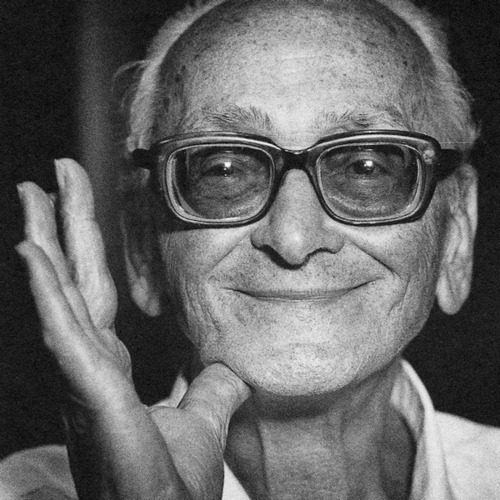Musical groceries store
or
The uneasiness about »NonTango«
from the perspective of NeoTango
by tanguerilla
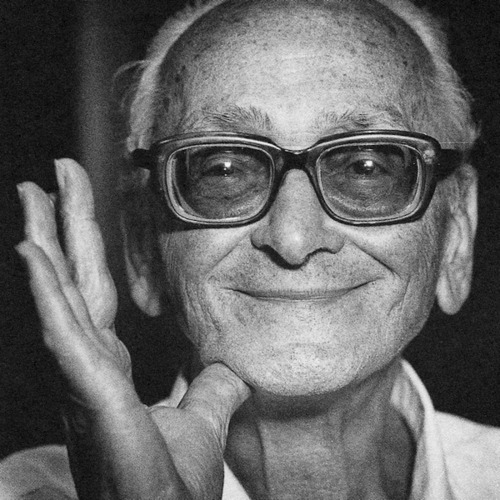
„The Tango grows with the talents of those which will come and already are here – with the newest styles, originated at the place where these were always invented – the society.“
Osvaldo Pugliese
What is NonTango?
„NonTango“ is optionally every contemporary music genre. The spectrum ranges from Folk, Country, Latin, House, TripHop, HipHop, Klezmer, Flamenco, Fado, Soundtracks, Arabian and Balkans beats, Blues, Rock, Soul up to Classic period. Because of its broad musical spectrum it´s also called „Fusion“ or „Crossover“.
Due to a lack of substantive reference to Tango music, the NonTango concept should subtly suggest the opposite on a syntactic level. It is extremely misleading however and a typical example of the rhetorical figure Oxymoron (in Greek ὀξύμωρος, from oxys „sharp, keen“ and μωρός mōros „dull, stupid“ that juxtaposes elements that appear to be contradictory.
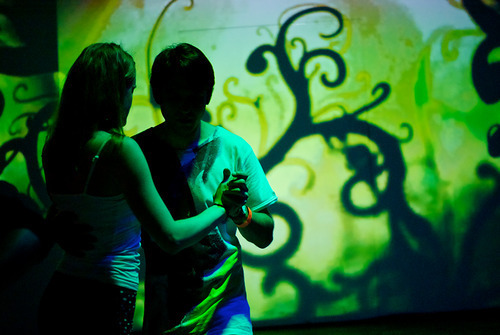
NonTango in Fusion events
For such dancing events tracks will be compiled to play lists according to the subjective music preference of the DJs and DJanes and squeezed into a simplified 4/4 metrical Tango pattern. There are many Facebook groups (Alternative Milonga PlayList, NonTangos for Tangodancers …) which are mainly used to discuss musical proposals with regard to their „Milonga suitability“. From this perspective Rossini´s Wilhem Tell Ouverture perfectly fits the metrical pattern of a Milonga – but in fact it isn´t by no means. But coquetry with Tango metrics remains the only musical connecting link to Tango. Nevertheless, the real reference to Tango exclusively is created through the adaptive and improvisational skills (or also not) of the dancers. The musical groceries store is thrown to their Stilettos that they must pick up, in hope that their abilities are sufficient to perform the music mix. That way they try cleaning out flops and optimise the play list based largely on trial and error. That procedure is chiefly used by beginner’s DJs, in particular with a lack of adequate dancing skills in order to be able to assess the danceability of their own music mix.
As people feel involved with the music which they are familiar with and have grown up, the music preference is shaped by the youth.
This means in particular the recourse to music of the 80th and 90th as a quarry for their subjective music selection and enlightens the chilly relation to the contemporary Tango. Consequently the inner distance to Tango Nuevo and NeoTango often and astonishing-wise constitutes the missing link between classic fundamentalist and Fusion-DJs. While on the one hand classicists nostalgically idealise the concept of the 40th Golden Era, Fusion-DJs on the other hand remain firmly committed to the lifestyle of their youth and try hard to revive their juvenile emotional structure via a nostalgic musical treasures. Some are thus out of step with the evolution of Tango – others have largely abandoned its essential musical principles and are only connected to Tango via a thin tread through the skills of dancers.
The weight proportion of Fusion substantially varies in alternative dance events – in some cases it even rises to 100 % (Milonnonga in Eppelheim). The share of most alternative dance events ranges from 50% to 80%. Many Fusion playlists even contain a considerable musical share of Época de Oro and thus prove the subliminal, musical, kindred spirit of Classical Milongas and Fusion events.
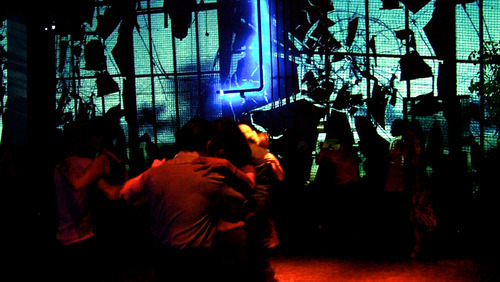
Escape from the complexity of Tango
The motivation and selfperception of Fusion-DJs and -DJanes is characterized by a putatively critical distance to Classical Tango. This superficial view nourished my illusion in the past that Fusion dance events would potentially develop from an embryonic level to authentic Neolongas with due care and attention. Instead, the musical share of significant unwieldy Tango Nuevos and NeoTangos have been marginalized and sacrificed for the sake of an easily consumable mix of »NeoNonTrad«. This crude mixture has become standard recipe of alternative dance events particularly in Northern Germany and the Rhine-Maine area over the past two years.
The alleged aversion of Fusion DJs and DJanes to Classic Tango turned into an escape from Tango in the quiet. Consequently, Fusion is referred to as »OffTango« in the Netherlands. In so doing it may now have thrown the baby out with the bathwater and abandoned the complexity of basic identity characteristics of Tango in favour of a soft-rinsed alchemy of grooves and melody.
On the other hand the following characteristic features have become increasingly obvious as musical constants in the course of developing Tango and constitute the style-forming core of contemporary Tango at the temporary end of its traditional line:
- Main rhythm as a metrical base of Tango is four-four time (Bue-nos Air-es: 1,2,3,4,1,2,3,4.1, … with greatest emphasis on 1 and weaker on 3
- As well the more complex 3-3-2 rhythm (Pa-na-ma Pa-na-ma Cu-ba) with emphasis on each 1, for instance Piazzolla´s »LiberTango«
- Syncope or Contratiempo / Off Beat is an irregular subdivision of the rhythm against the basic beat (Pugliese)
- Structural arrangement (e.g. Q & A) in themes, phrases, beats
- Melody as rhythmical element (piano)
- Typical instrumentation of Tango
- Continuous assimilation of historical and contemporary music genres (Waltz, Polka, Jazz, TripHop …)
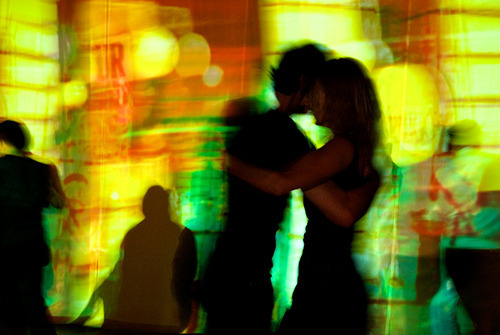
Demarcation from NeoTango
While NeoTango attempts to achieve integration of contemporary music influence into Tango, »ZeroTango« leads to a disintegration process which culminates in a dualism of Fusion and Classic Tango.
Over the course of the last decade NeoTango was characterized by bands which spiced up compositions of the last century with electronic instruments and effects from the present.
Recently two new, parallel lines of development are taking shape. On the one hand a compositional re-orientation of well known bands like‚ »Narcotango«‚ »Gotan Project« and »Bajofondo» can be observed, which coincides with a personnal restructuring and reduction (»Plaza Francia«, »Narcotango«‚ »Otros Aires»). In parallel attention started to focus on a new generation of orchestras – mainly from Buenos Aires – which have strong similarities to Orquesta Típicas in instrumentation and size, but are musically oriented to Piazzolla and Pugliese. Let us mention, for example, »Astillero«‚ »OTFF«‚ »Orquesta Típica el of Afronte«‚ »La Típica Sanata«‚ »Quinteto Zárate« and »Orquesta Típica La Vidú«. They combine acoustic, multiple instrumentations, particularly demanding, original compositions and concerts with the attitude of Rock bands, presenting specific challenges for audience and dancers.

Responsibility of the DJs | DJanes
With regard to these trends DJs and DJanes have a particularly significant responsibility for continuity and innovation of Tango, for the evolution of the musical receptivity of the dancers and the popularisation of contemporary Tango bands. Service mentality – often requested by representatives of Classical Tango – inadequate for the tasks that we are facing.
»ZeroTango« events also fail because they evade the issue of complexity and unwieldyness of Tango and suffer a loss of quality in terms of music and dance.
A conciliatory concluding remark:
My playlist also contains some hand-picked contemporary songs as a selective, musical inspiration and loosening-up for the dance floor. We therefore wish the critical contribution not to be regarded as pleading for selfrestriction but for evolution of Tango.
It is an appeal to encouraging DJanes and DJs to dare more innovation, open-ears, curiosity, nonconformity and self-generated initiative.
For more Neo in Tango.

This article is a translation of the original title:
»Musikalischer Gemischtwarenladen
oder
Das Unbehagen am ‚NonTango’ aus der Perspektive des NeoTango«
published at Tangodanza 1/2015 (Nr. 61)

